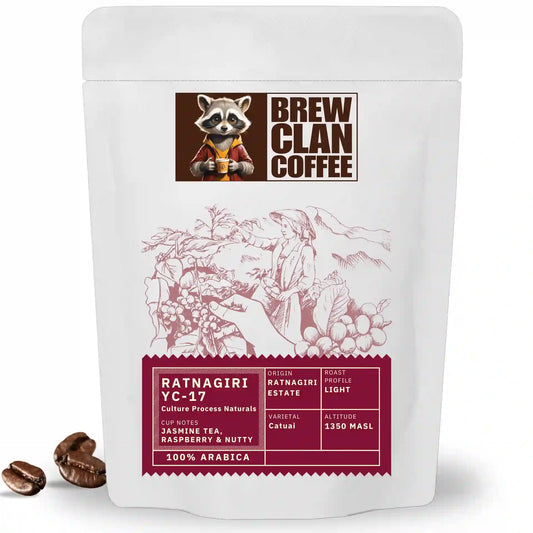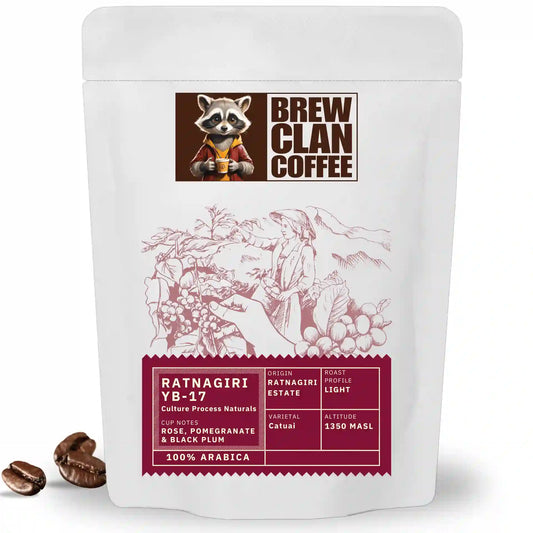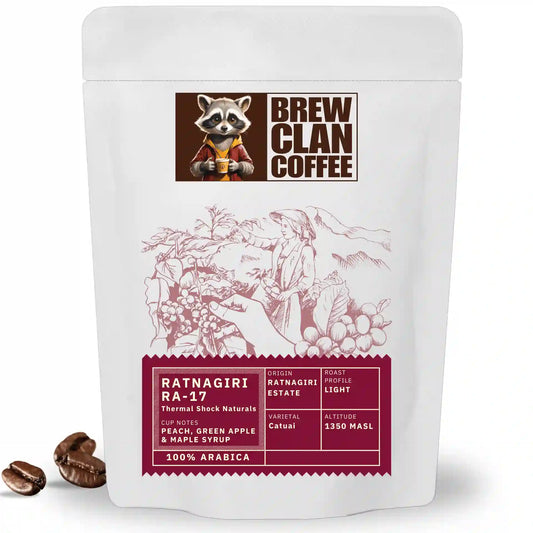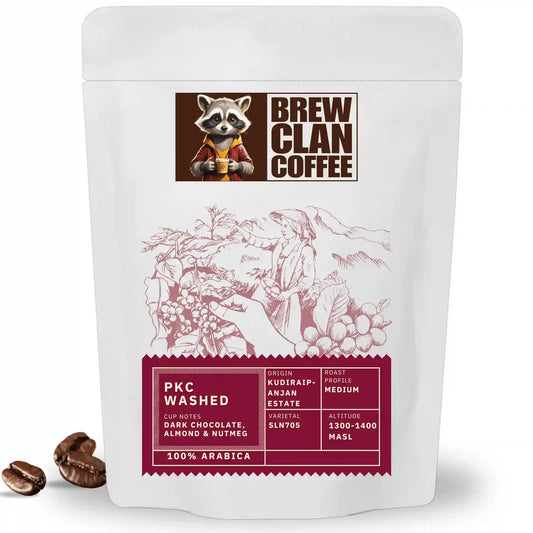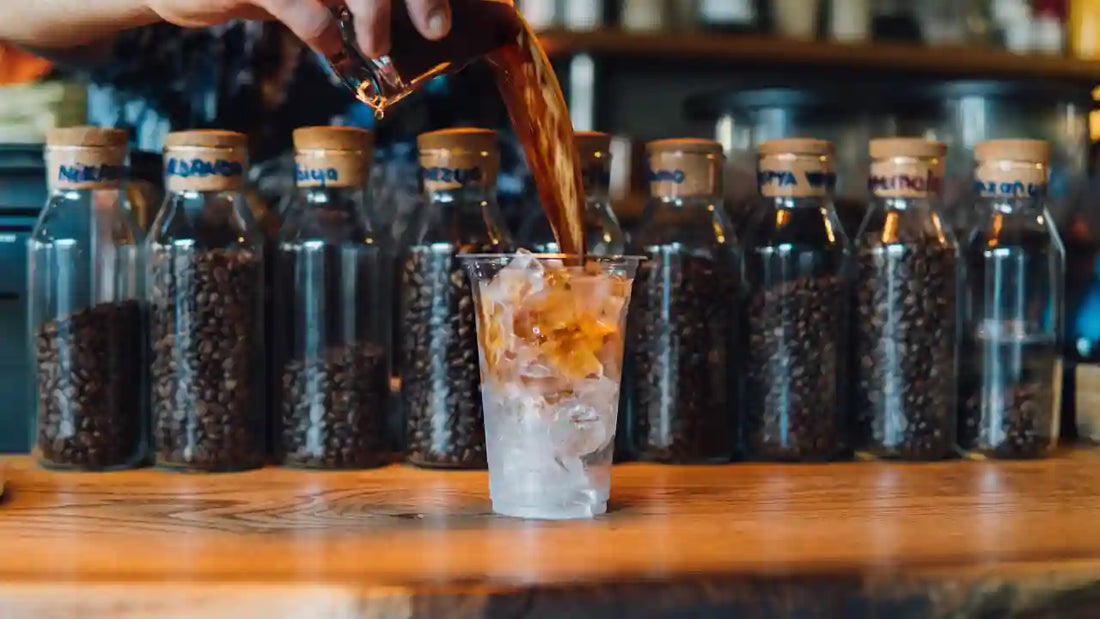
Why Your Cold Brew Is Sour & How to Fix It
Share
Cold brew is supposed to be mellow, smooth, and chocolatey, not sharp, tangy, or mouth-puckering.
So if your cold brew tastes unexpectedly sour, you’re probably wondering: What went wrong?
You’re not alone. Sour-tasting cold brew is a common issue, especially for home brewers just getting started. The good news? It has less to do with the coffee itself, and more with how it’s brewed.
Cold brew is a slow extraction process, and small tweaks, like brew time, grind size, or roast level, can make a big difference in the final cup. In this guide, we’ll break down exactly why your cold brew might be tasting sour and give you clear, simple fixes to bring back that smooth, rich flavor you were aiming for.
Let’s get your cold brew back on track.
Why Cold Brew Tastes Sour: Understanding Extraction
To fix a sour-tasting cold brew, we first need to understand what’s happening inside the brew jar.
Cold brew is made using cold or room temperature water, which means coffee extracts much more slowly than in hot methods like French press or pour over. Because of this, it requires a long steeping time, often 16 to 24 hours, to extract the full range of flavors from the beans.
When coffee doesn’t brew long enough or isn’t extracted evenly, you end up with under-extraction.
What does under-extraction taste like?
- Sour
- Sharp
- Hollow or empty
- Sometimes even fruity in a bad way
That sourness you’re tasting? It’s the early-stage acids and lighter compounds that were pulled out first, before the deeper sugars, oils, and body could come through.
The key to smooth, rich cold brew?
Dialing in the grind size, brew time, and coffee-to-water ratio so that your beans are fully, but gently, extracted.
Mistake #1: Brewing for Too Little Time
Cold brew isn’t like a quick cup of French press or pour over, it’s a slow extraction method by design. If you cut the steeping short, your coffee won’t have enough time to develop body, sweetness, or balance.
The result? A cup that tastes sour, thin, and unfinished.
Why It Happens:
- Brewing for less than 12–14 hours
- Brewing in the fridge without adjusting time
- Pouring it out “early” to test and then being disappointed
The Fix:
- Brew at room temperature for 16 - 18 hours
- If brewing in the fridge, go longer - 18 to 24 hours
- Don’t just go by the clock, taste a small sample around hour 16, and let it sit longer if it still feels sharp or sour
Pro tip: Under-extracted cold brew doesn’t improve with extra steeping after straining. So get your timing right before you filter it.
Mistake #2: Grinding Too Coarse
Yes, cold brew needs a coarse grind, but there’s such a thing as too coarse.
If your coffee is ground into large, uneven chunks (think rocks instead of sea salt), it won’t extract properly. The water can’t reach the flavorful compounds trapped inside the beans, and what you end up with is a brew that tastes watery, sour, or flat.
Why It Happens:
- Using a blade grinder (which produces inconsistent particles)
- Using pre-ground coffee meant for French press (which can be overly coarse)
- Thinking “the coarser, the better” without testing flavor
The Fix:
- Aim for a medium-coarse to coarse grind, more like kosher salt than gravel
- Use a burr grinder for even particle size (this ensures uniform extraction)
- If you’re stuck with pre-ground coffee, make sure it’s labeled specifically for cold brew or French press, and extend your steep time slightly to compensate
Remember: Too fine, and your brew gets bitter. Too coarse, and it’s sour. You’re aiming for the sweet spot.
Mistake #3: Water-to-Coffee Ratio Off
Cold brew is all about balance. If you use too much water and too little coffee, you’ll get a weak, sour-tasting drink that feels flat and acidic, especially if you’re expecting a rich, smooth concentrate.
This mistake is surprisingly common because many people assume cold brew is just “coffee + cold water,” without measuring carefully.
Why It Happens:
- Guessing the amount of coffee instead of weighing it
- Using hot coffee ratios for cold brewing
- Trying to make ready-to-drink cold brew instead of concentrate
The Fix:
- Brew a concentrate with a ratio of 1:6 to 1:8 (coffee to water by weight)
- → Example: 100g coffee to 600g water
- Later, you can dilute with milk, water, or ice to your liking
- If you don’t have a scale, aim for about 1 cup of coffee beans to 4 cups of water as a rough guide
Tip: Brewing concentrate gives you more control. You can customize strength after brewing, instead of ending up with a weak batch you can’t fix.
Mistake #4: Using Light Roast Coffee (Without Adjustments)
Light roast coffees can be amazing, bright, complex, floral; but they’re also trickier to extract in a cold brew setup. That’s because the denser, lighter-roasted beans hold onto their flavors more tightly, requiring more time or a finer grind to release those notes.
If you brew light roasts the same way you’d brew a medium or dark roast, you might end up with something that tastes sour, sharp, or grassy.
Why It Happens:
- Light roasts contain more acids and less caramelized sugar
- They need longer brewing to mellow out in cold water
- Without adjustments, they can dominate the cup with brightness
The Fix:
- Prefer a medium or medium-dark roast for cold brew if you like smooth, chocolaty, low-acid flavor
- Still want to use a light roast?
- Try brewing for 20–24 hours instead of 16
- Or grind slightly finer (closer to medium-coarse than coarse)
💡 At BrewClan, we roast single-origin beans across roast levels, including cold-brew-friendly profiles that bring out sweetness and body without harshness.
Mistake #5: Water Temperature Too Low
It’s called cold brew, yes; but brewing it too cold can cause serious under-extraction, especially if you’re steeping in the fridge the whole time.
Cold water extracts coffee slowly. If it’s too cold (like fridge temperatures below 5°C), your brew may never reach full flavor, leaving you with a cup that tastes sour, thin, or overly bright.
Why It Happens:
- Brewing directly in the refrigerator without adjusting time
- Trying to rush cold brew by using ice-cold water
- Forgetting that temperature affects extraction speed
The Fix:
- Brew at room temperature (20–25°C) for 16–18 hours
- Then transfer to the fridge after straining to chill it
- If you must brew in the fridge (hot climate, safety, etc.), steep longer: 20–24 hours minimum
⚠️ Important: Always strain the coffee once your steep time is done, even if it’s cold, to prevent over-extraction or off-flavors.
Mistake #6: Not Filtering Properly
You’ve nailed the brew time, grind, and ratio, but if you rush the filtering step, your cold brew can still end up sour or gritty.
Why? Because after steeping, those leftover coffee particles (called “fines”) continue to extract, even after the main brew is done. This can push your cup from smooth to sour, stale, or even harsh over time.
Why It Happens:
- Using only a coarse strainer or cheesecloth
- Letting the cold brew sit on the grounds after steeping
- Not straining thoroughly enough before refrigerating
The Fix:
-
Use a two-stage filter:
- First, strain through a fine mesh or metal sieve
- Then, run it through a paper filter or cloth filter to remove remaining fines
- Don’t let coffee sit on the grounds once steeping is done, strain it immediately
- Store the filtered cold brew in a clean, airtight container
This one small step can take your cold brew from “okay” to “café-quality.”
Quick Reference: Sour Cold Brew Troubleshooting Chart
|
Problem |
Likely Cause |
Fix |
|---|---|---|
|
Tastes sour or sharp |
Under-extracted brew |
Brew for 16–24 hours depending on method |
|
Thin and acidic |
Grind too coarse |
Use a consistent medium-coarse grind (not chunky) |
|
Weak and sour |
Too much water, not enough coffee |
Try 1:6 to 1:8 ratio (coffee:water by weight) |
|
Bright and grassy (light roast) |
Light roast not adjusted for cold brew |
Brew longer or grind slightly finer |
|
Flat and sour |
Water too cold during steeping |
Brew at room temp; only chill after straining |
|
Gets sour after sitting |
Left on grounds too long |
Strain immediately after steep time ends |
|
Slight sediment + sour notes |
Incomplete or poor filtration |
Use fine paper/cloth filter after coarse straining |
BrewClan Tip: The Cold Brew You Deserve Starts with Fresh, Balanced Beans
Cold brew brings out a coffee’s smoothest, most mellow side, but only if the beans are up to the task.
Even with perfect technique, stale or poorly roasted beans can leave your brew tasting sharp, sour, or flat. That’s why we recommend starting with freshly roasted, specialty-grade coffee, preferably with a medium to medium-dark roast profile for balanced extraction.
At BrewClan, we roast in small batches and offer beans that are specifically well-suited for cold brew:
- Naturally sweet and chocolaty
- Low in bitterness
- Carefully processed for clarity and smoothness
👉 Explore BrewClan’s Cold Brew Collection
Try just one batch with better beans, and taste the difference in every sip.
FAQs - Frequently Asked Questions
1. Why does my cold brew taste sour?
Sour cold brew usually means under-extraction, your coffee didn’t brew long enough, the grind was too coarse, or the ratio of coffee to water was off.
2. How long should I steep cold brew to avoid sourness?
For best results, steep at room temperature for 16–18 hours, or in the fridge for 20–24 hours. Shorter times often cause under-extraction and sour flavor.
3. What’s the best grind size for cold brew?
Use a medium-coarse to coarse grind, like kosher salt. Avoid overly chunky grinds, which lead to sour, thin coffee.
4. Can light roast coffee be used for cold brew?
Yes, but it requires longer steep time or a slightly finer grind. Light roasts are more acidic and harder to extract with cold water.
5. Should I brew cold brew at room temperature or in the fridge?
Room temperature is better for smooth extraction. Brewing in the fridge is fine, but you’ll need to steep longer and ensure proper filtration.
6. How do I fix cold brew that’s already sour?
Unfortunately, you can’t fix an already sour batch, but you can dilute it with milk or use it in recipes. For next time, adjust steep time and grind size.
7. Does sour cold brew mean bad beans?
Not always, but stale or low-quality beans can exaggerate sourness. Use freshly roasted specialty coffee for the best cold brew experience.

